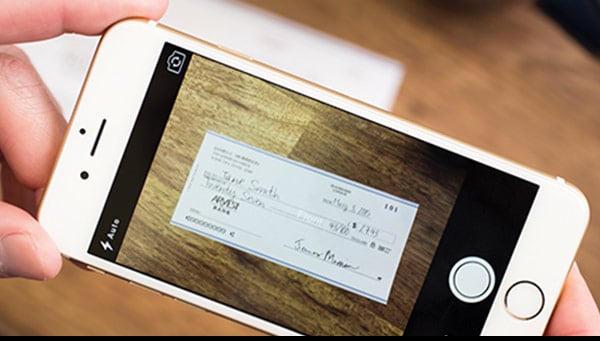Small Business Administration (SBA) Programs
Menu
The Coronavirus Aid, Relief, and Economic Security (CARES) Act, which was signed into law Friday, March 27, was created in part to assist businesses amid the pandemic and economic downturn. The CARES Act enhances existing Small Business Administration (SBA) loan programs and establishes new ones.
One of the new and important SBA programs created with the CARES Act is the Paycheck Protection Program (PPP), which makes loans available to businesses that maintain their payroll during this emergency. Importantly, these loans may be forgiven pursuant to the PPP guidelines.
The Small Business Administration is expected to publish additional details about the PPP in the coming days. FirstBank Southwest resources will then be able to process requests for PPP loans. FirstBank Southwest is working hard to be positioned to assist business owners in the communities we serve when the PPP is available.
Which SBA Loan Option is Right for My Business?
If you would like to be informed when you may begin the PPP application process, please follow the registration link below. At this time, as we anticipate high demand, only FirstBank Southwest customers will be eligible.
Sign-Up for more information
Paycheck Protection Program Application
As you seek to better understand the SBA resources becoming available with the CARES Act, including the Paycheck Protection Program, we invite you to view the document linked below.
For a more in-depth understanding, download this checklist prepared by the U.S. Chamber of Commerce
What You Have To Submit
- The CURRENT (as of April 3, 2020) PPP Borrower Application Form. OMB Control No.: 3245-0407
- Payroll records – BROKEN DOWN BY EMPLOYEE for all of 2019
- Payroll records and confirmation of payment of payroll taxes on or around February 15, 2020
How to Calculate the Loan Amount***
- Total Payroll costs for all of 2019. (See NOTE 1 below for what can be included in Payroll Costs)
- Subtract any salary paid to any single employee in excess of $100,000 for the year.
- Example: John Smith’s salary in 2019 was $125,000. Subtract $25,000 from your total payroll costs in point 1 above.
- Divide the final total payroll costs by 12.
- Multiply that amount by 2.5
Note 1: What Qualifies as “Payroll Costs”
- Salary, wages, commissions or similar compensation
- IF YOU HAVE LAID PEOPLE OFF: You will need to rehire them at the same rate of pay they were making at 2/15/20. They will need to remain on your payroll for 8 weeks from the date of the loan.
- Cash tips – based on employer records
- Payment to employees for vacation, parental, family, medical or sick leave
- Additional payments for employee separation or termination
- Employer paid amounts for:
- Group health care coverage (including insurance premiums)
- Retirement
- State and local taxes assessed on employee compensation
What Does NOT qualify for “Payroll Costs”
- Federal employment taxes, including FICA
- The amount of salary paid to a single individual in excess of $100,000, annually
- Any compensation paid to an employee whose principal place of residence is outside of the United States
- Payments to Independent Contractors (i.e. 1099 employees). These individuals will be eligible to apply on their own, and cannot be treated as an employee for PPP purposes.
- Sick and family leave wages for which a credit is allowed under the Families First Corona Virus Response Act
***If you received an Economic Injury Disaster Loan (EIDL) from the SBA between January 31, 2020 and April 3, 2020 please speak to your loan officer. This includes EIDL COVID-19 loans.
Terms of a PPP Loan
- Term: 2 Years
- Interest Rate: 1.00%
- Payments automatically deferred for 6 months (principal and interest).
The loan is eligible for full forgiveness of principal and interest IF the following conditions are met:
- The number of employees is maintained
- The level of their compensation is maintained
- A minimum of 75% of total loan proceeds are used specifically for payroll costs
- Remaining 25% of loan funds are used only for previously specified purposes.
If these requirements for the use of loan funds are not met, then the amount of loan that is eligible for forgiveness will be reduced. The Borrower remains liable for any unforgiven portion of the loan.
How PPP Loan Funds Can Be Used
Over the 8-weekperiodfollowing the date of the loan:
- Eligible Payroll costs (matches what was used to calculate the original loan amount).
- Payments of interest on mortgage obligations incurred before February 15, 2020
- Rent payments on leases dated before February 15, 2020
- Utility payments under service agreements dated before February 15, 2020
NOTE: Only a maximum of 25% loan proceeds may be used for non-payroll purposes.
If any loan funds are used for a non-approved purpose, the amount of the loan that is eligible for forgiveness will be reduced. The Borrower remains liable for any unforgiven portion of the loan.
Applicant Responsibilities
Complete SBA Form 2483 and provide the following:
- Documentation verifying the number of FTE (includes tax filings reported to IRS, State income, Payroll and unemployment).
- Documentation verifying payments on covered mortgage obligations, payments on covered lease obligations, and covered utility payments. Sole proprietors and independent contractors may not include mortgages, rent or utility in forgiveness unless the Borrower’s 2019 or 2018 IRS Form 1040, Schedule C, documents amounts reported for these categories.
- Certification from a representative of the borrower that the information provided is “True and Correct” and the amount requested for forgiveness was used for the covered expenses.
Get Started
Our FBSW Loan Officers are here to help! Please fill out the form below to request a call.
Enjoy A Variety of Benefits

EMV Debit Cards
Our EMV Debit Cards are a secure and convenient payment method for everyday transactions.

Mobile Deposit
A convenient way for sole proprietors make check deposits without leaving the office.

Positive Pay
A secure and easy way to protect your business against fraudulent activity from within your Online Banking.

SecurLOCK
Protect your debit card from fraud, control where your card is used and receive spending notifications.

Treasury Management
Treasury Management services to help effectively and safely manage your business' cash flow while saving you time and effort.








